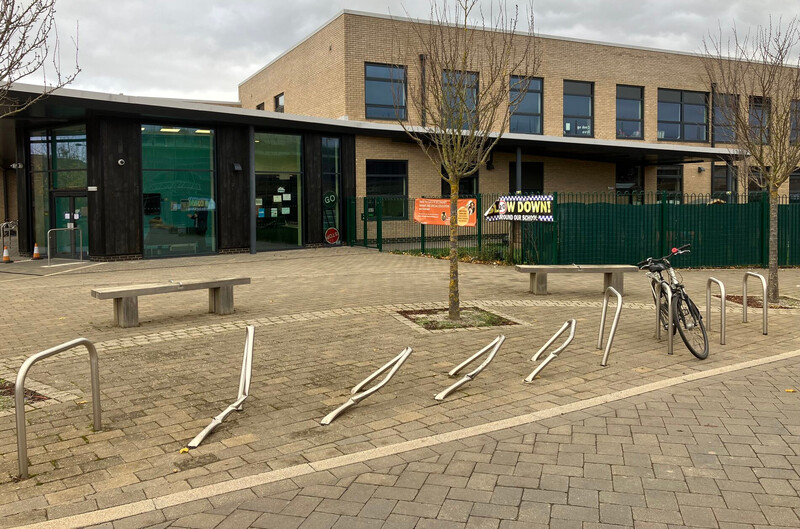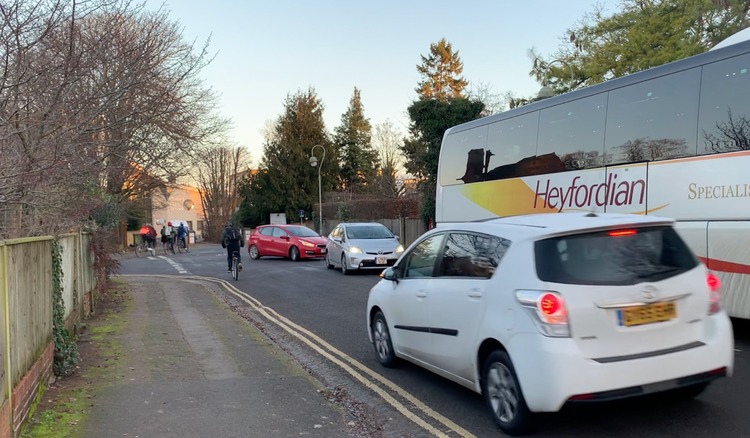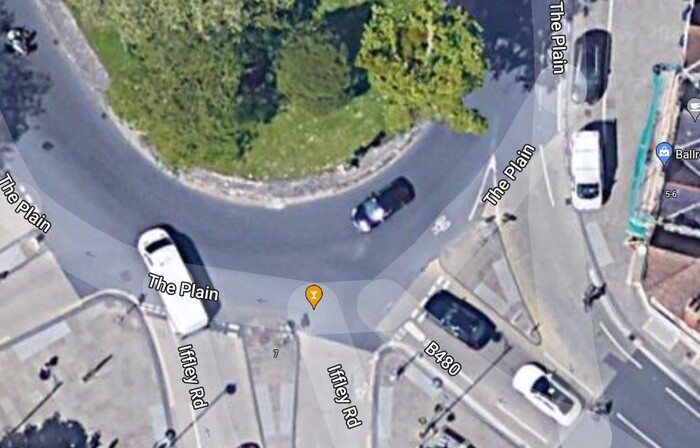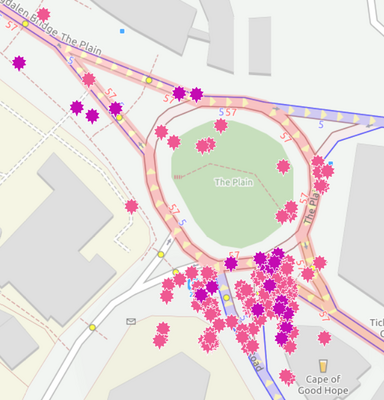There have been concerns about road danger on Barton Fields Rd, the spine road that runs through the Barton Park development on the eastern outskirts of Oxford, in particular around the primary school. One driver ploughed into the cycle parking stands outside the school, another hit one of the buildings under construction on the other side of the street, and there are a lot of other incidents that don't show up in the official road injury record. (There are also concerns about road danger at the crossing of the A40; I have written about those elsewhere.)

cycle parking stands outside Barton Park Primary School, bent over by being driven into
|
more
The failure to make Oxford's main roads 20mph is a black spot on Oxfordshire's otherwise successful 20mph speed limit roll out. If one were to pick the roads which need 20mph limits most, it would be roads inside Oxford such as Botley Rd, Woodstock Rd and Banbury Rd, because they have very large numbers of people walking and cycling both along and across them, with clear collision hotspots at pretty much every minor road junction. Making Oxford's remaining roads 20mph is an essential step to achieving both Vision Zero and the county's cycling targets, but it is also the single most effective public health intervention within the county's power. more
Deaths and serious injuries — the target of Vision Zero — are just the tip of a much larger iceberg of road danger harm. In addition to the 20 road traffic fatalities and 450 serious injuries in Oxford over the last decade, there were 2800 reported slight injuries (all of those from the STATS19 police database) and (for cycling injuries, across Oxfordshire) ten times as many hospital admissions and attendances (this includes non-collision injuries which are rarely reported to the police). And there will be many minor injuries and collisions which are neither reported to the police nor result in hospital presentations. (Following Ling Felce's death at the Plain, I heard several people make comments like "Oh yes, I've been knocked off my bike twice at the Plain" and "No, I didn't report it either time.") There are even more near-misses and other incidents perceived as threatening. more
Oxfordshire County Council has allocated £8 million to its 20mph speed limit programme (to be spent over three years). But none of that money has been spent - or looks like being spent - in Oxford, even though lower speeds there would have the greatest effect on road danger reduction. (The 20mph speed changes on Iffley Rd, Cowley Rd, etc. were not part of this programme, but were part of the Quickways schemes, funded by the central government Active Travel Fund.) more
The Charlbury Rd area in north Oxford has a major problem with road danger at school drop-off and pickup times. Large numbers of school-run vehicles arriving and stopping and departing in a short period of time create congestion, along with turning and reversing movements that endanger people walking and cycling.
 more
more
The key goal of Vision Zero is "to eliminate all traffic-related deaths and severe injuries, while increasing safety, health, and mobility for all". Vision Zero was originally a Swedish idea, but it has been adopted by the Netherlands and by cities such as London, Oslo, Seattle and Denver — and now by Oxfordshire, along with some other local authorities and regions. more
While the county should continue to support schemes for schools that request them, having that as the only way for schemes to happen will limit the effectiveness of the program. The county should proactively plan School Streets schemes at those locations where they will have the most effect. more
There are some relatively easy changes that would make cycling safer at the Plain — ones that can be implemented without engineering works.
Angle or stagger the give-way line on the Cowley Rd entry, so people on cycles don't have their view of approaching vehicles on the roundabout obscured by motor vehicles on their right. (Compare the give way lines on Iffley and Cowley Rd in the Google satellite image.) By far the largest concentration of reported collisions involve cars or cycles entering the Plain from Cowley Rd.
more
Two terrible deaths within a month have brought cycling safety to the fore, but the problems are not new and the Plain in particular has been a worry for a long time. Safety was the rationale behind the rebuild of the Plain in 2016 (which made things slightly worse), I used it as an example of junction design that failed to address walking and cycling safety and accessibility, and I tweeted about it just two weeks before the fatality.
Unfortunately there are no easy solutions, at the Plain or elsewhere in Oxford. Indeed I would argue that there are no significant improvements that aren't either very expensive or a long way from being Pareto (making no one worse off): witness the unhappiness about the parking removal in the Quickways and the modal filtering in the low traffic neighbourhoods. more




